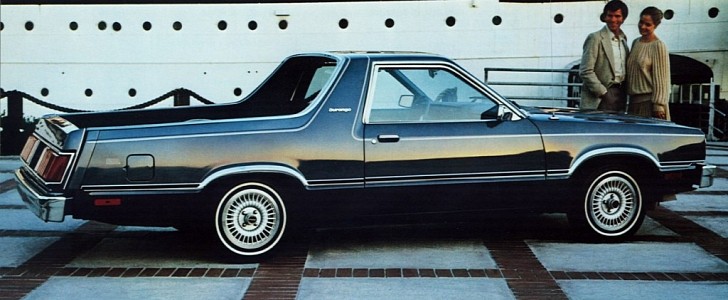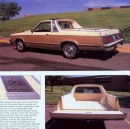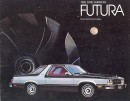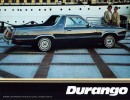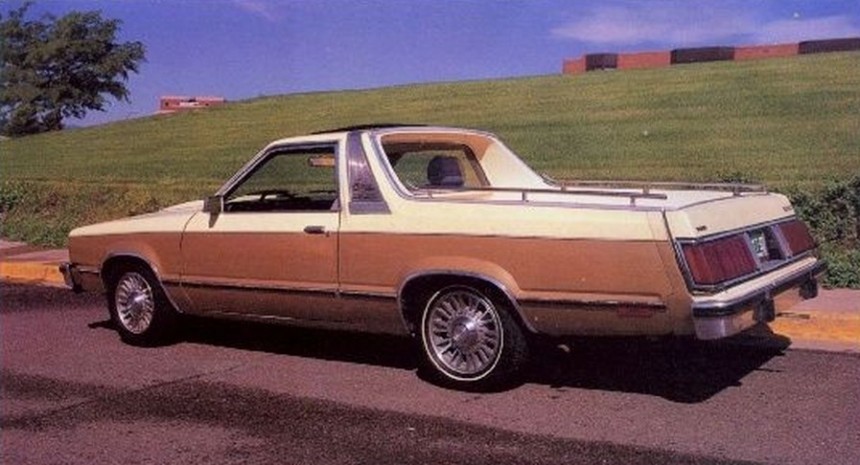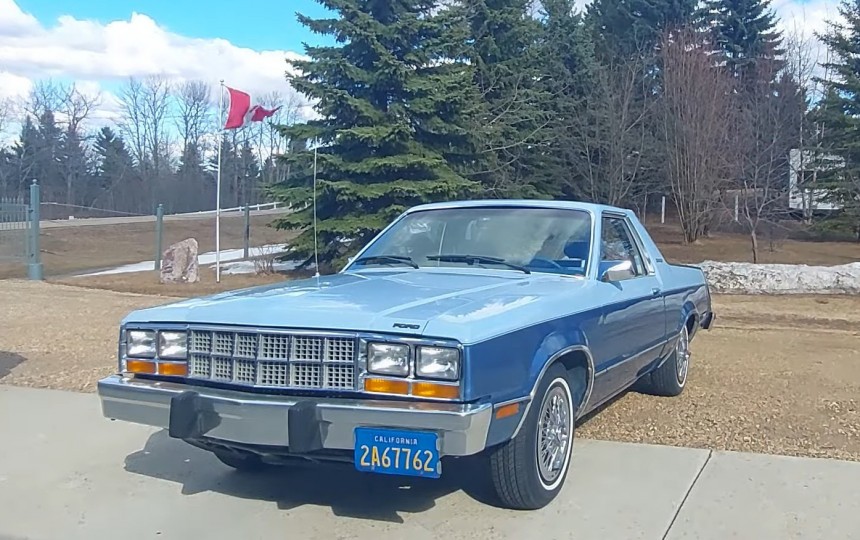While the coupe utility body style can be traced back to the 1930s, car-based pickups didn't become popular until the late 1950s. That's when Ford and Chevrolet introduced full-size, two-door automobiles with beds behind their cabs.
Ford was first to the coupe utility party with the Ranchero. Launched in 1957, it was based on the Fairlane. Chevrolet's take on the concept, the El Camino, arrived in 1959, sharing styling cues and underpinnings with the Biscayne and Impala.
Both pickups remained in showrooms for decades, but Ford and Chevrolet took notably different paths with them. Following a 1960 model year with sales of only 14,163 units, Chevy discontinued the El Camino.
The nameplate returned in 1964, but this time around, it was no longer based on the Biscayne. GM had "relegated" the El Camino to midsize duty, sharing its platform with the Chevelle.
The El Camino became even more popular during the muscle car era, selling more than 40,000 units per year. Sales peaked at almost 65,000 examples in 1973 and remained strong until the late 1970s.
As compact pickup trucks became more popular, sales of coupe utility models began to drop in the early 1980s, and most of them were discontinued. The El Camino, however, soldiered on until 1987, when Chevy dropped the nameplate without a successor.
Also a full-size in the beginning, the Ranchero became much smaller in 1960, when it was moved on the compact Falcon platform. In 1966, it joined the El Camino on the midsize market, sharing platforms with the Fairlane and the Torino.
When the latter was discontinued in 1976, the Ranchero became a pickup version of the Ford LTD. But unlike Chevrolet, Ford decided to leave the market in 1979 to focus on light trucks like the Mazda-built Courier and later the iconic Ranger.
But even though it dropped the Ranchero, Ford didn't abandon the coupe utility segment altogether in 1979.
Still thinking it might have a shot at the downsized and successful El Camino that Chevy introduced in 1978, Ford partnered with National Coach Works of Los Angeles, California, for a brand-new car-based truck.
Designed by Jim Stephenson, the new pickup was built around the Fairmont, a compact car that Ford launched in 1978 as a replacement for the Maverick. Stephenson chose the two-door Futura as a base, cutting the roof behind the B-pillars and removing the upper trunk lid.
The company used an aluminum tub covered in fiberglass for the bed, a lightweight and rust-proof solution.
The rear fascia retained the Fairmont's taillight and license plate setup but was redesigned into a fold-down tailgate, which was rather unusual. Because the taillights were no longer visible when the tailgate was open, the pickup was produced with a disclaimer warning drivers from driving with the tailgate down.
The pickup was called the Durango, a name that's a bit confusing now since Dodge has an SUV with the same name still in production.
While Ford allowed the conversion pickups to be sold through its dealerships, the rights to produce and sell the Durango were licensed to National Coach Works, which modified the Fairmont Futuras in Pacoima, California.
All Durangos were fitted with a 200-cubic-inch (3.3-liter) inline-six engine, which was shared with the Ford Thunderbird and Fairmont, as well as various Mercury products at the time. Rated at only 94 horsepower, it came only with a three-speed automatic transmission.
Unfortunately, the Durango never became a full-fledged production model. The project was reportedly scrapped when the man who designed the vehicle passed away, and only a few conversions made it into Ford dealerships.
There's no specific data on how many of these small trucks were built, but most Ford historians agree that National Coach Works made 212 conversions from 1979 to 1982.
As a result, the Durango is one of Ford's most unknown and mysterious nameplates. And the fact that it shares a badge with the iconic Dodge SUV makes things that much more confusing. But at the same time, the Durango's unfortunate fate also makes it a rare gem among pickup utility vehicles. It's not only the unknown successor to the Ranchero, but it's also Ford's last car-based pickup.
Both pickups remained in showrooms for decades, but Ford and Chevrolet took notably different paths with them. Following a 1960 model year with sales of only 14,163 units, Chevy discontinued the El Camino.
The nameplate returned in 1964, but this time around, it was no longer based on the Biscayne. GM had "relegated" the El Camino to midsize duty, sharing its platform with the Chevelle.
The El Camino became even more popular during the muscle car era, selling more than 40,000 units per year. Sales peaked at almost 65,000 examples in 1973 and remained strong until the late 1970s.
Also a full-size in the beginning, the Ranchero became much smaller in 1960, when it was moved on the compact Falcon platform. In 1966, it joined the El Camino on the midsize market, sharing platforms with the Fairlane and the Torino.
When the latter was discontinued in 1976, the Ranchero became a pickup version of the Ford LTD. But unlike Chevrolet, Ford decided to leave the market in 1979 to focus on light trucks like the Mazda-built Courier and later the iconic Ranger.
But even though it dropped the Ranchero, Ford didn't abandon the coupe utility segment altogether in 1979.
Still thinking it might have a shot at the downsized and successful El Camino that Chevy introduced in 1978, Ford partnered with National Coach Works of Los Angeles, California, for a brand-new car-based truck.
The company used an aluminum tub covered in fiberglass for the bed, a lightweight and rust-proof solution.
The rear fascia retained the Fairmont's taillight and license plate setup but was redesigned into a fold-down tailgate, which was rather unusual. Because the taillights were no longer visible when the tailgate was open, the pickup was produced with a disclaimer warning drivers from driving with the tailgate down.
The pickup was called the Durango, a name that's a bit confusing now since Dodge has an SUV with the same name still in production.
All Durangos were fitted with a 200-cubic-inch (3.3-liter) inline-six engine, which was shared with the Ford Thunderbird and Fairmont, as well as various Mercury products at the time. Rated at only 94 horsepower, it came only with a three-speed automatic transmission.
Unfortunately, the Durango never became a full-fledged production model. The project was reportedly scrapped when the man who designed the vehicle passed away, and only a few conversions made it into Ford dealerships.
There's no specific data on how many of these small trucks were built, but most Ford historians agree that National Coach Works made 212 conversions from 1979 to 1982.
As a result, the Durango is one of Ford's most unknown and mysterious nameplates. And the fact that it shares a badge with the iconic Dodge SUV makes things that much more confusing. But at the same time, the Durango's unfortunate fate also makes it a rare gem among pickup utility vehicles. It's not only the unknown successor to the Ranchero, but it's also Ford's last car-based pickup.
